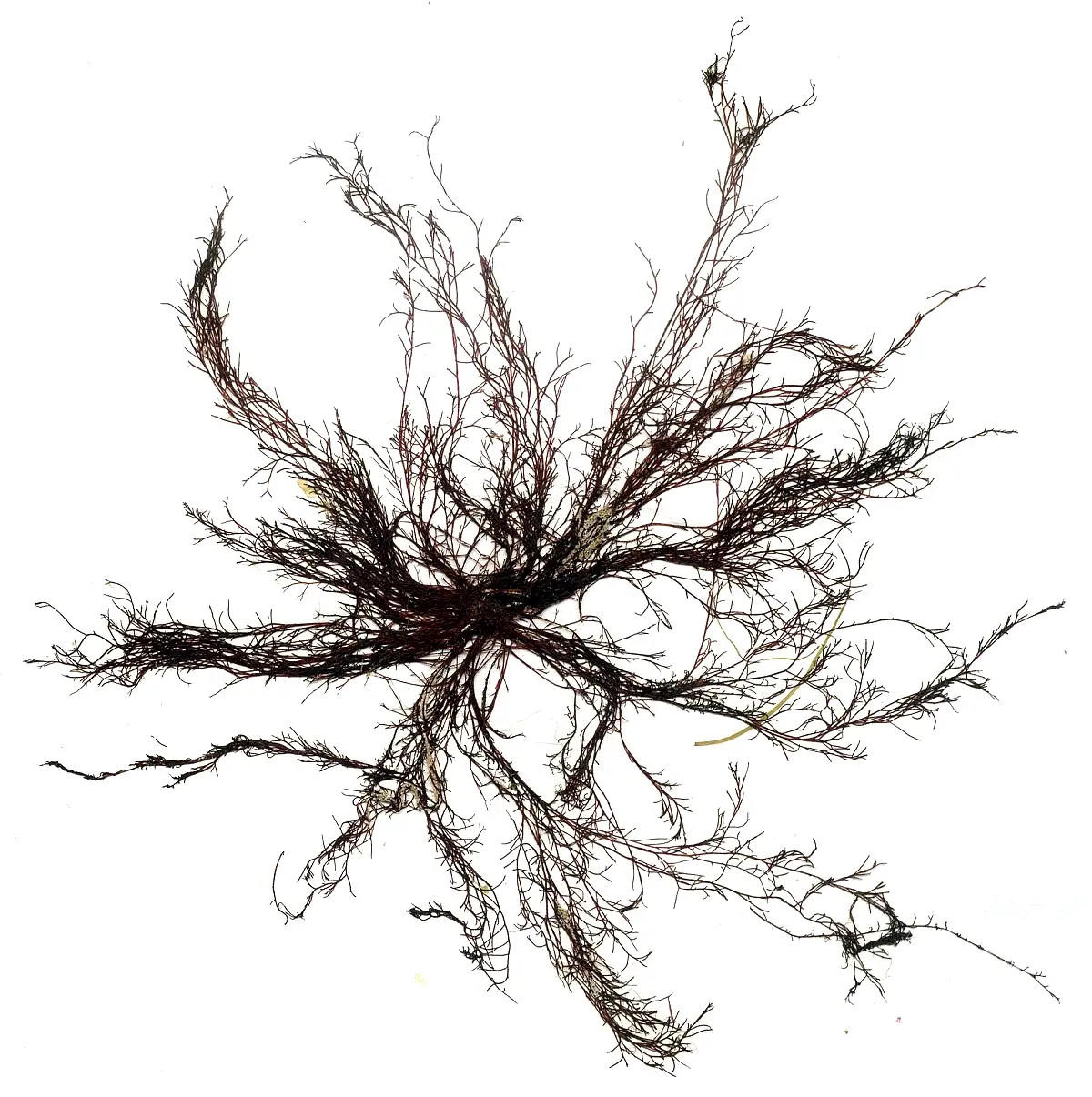Contents
CLASSIFICATION OF POLYSIPHONIA
Sub-division :- Algae
Class :- Rhodophyceae
Sub class :- Florideae
Order :- Ceramiales
Family :- Rhodomelaceae
Genus :- Polysiphonia
Species of Polysiphonia are exclusively marine. These are most commonly found along the Atlantic and Pacific coasts, in littoral and sub-littoral regions. A few species occur as epiphytes on mangroves or brown seaweeds. A small number of species are also found along the Indian coasts.
EXTERNAL FEATURES OF THALLUS AND A CELL
- Plant body is filamentous. Filaments are multicellular, branched and polysiphonous.
- Branching is dichotomous. Each branch terminates into a single celled apex, followed by a number of flat cells.
- Thallus is polysiphonous i.e. made of series of parallel filaments.
- Centre is occupied by a large barrel shaped cell (axial cell or central siphon). It is surrounded by 4-24 peripheral cells (pericentral siphons).
- In the apical region, two or three cells below the apical cell, uniseriate, dichotomously divided, gradually tapering and multicellular filament is produced. It is known as trichoblast.
- Many species remain attached to the substratum by thick walled, richly lobed and unicellular rhizoids (attaching organs) which arise from the peripheral cells of the creeping system.
- The cell wall is thick. Cell is uninucleate. It has a large central vacuole. Chromatophores are small, discoid and many times without pyrenoids. Reserve food is in the form of starch grains-floridoside.
- The neighbouring cells are connected with one another by cytoplasmic lining known as pit connections.
SPERMATANGIA
- The genus shows male plants bearing antheridia.
- Antheridia are produced in clusters by fertile trichoblasts situated near the apex.
- Antheridium is known as spermatangium. It is oval in shape, naked (without outer membrane) and contains many non-motile spermatia.
- Each spermatium is small, oval to spherical, uninucleate and non-motile.
STRUCTURE OF POLYSIPHONIA
- The carpogonia is present on the female plants inside the procarp.
- Procarp is urn-shaped body. The wall is called pericarp that has an opening known as ostiole.
- A long, tubular, receptive organ called trichogyne protrudes out of the ostiole.
- At the base of trichogyne lies a swollen part, called carpogonium with a single female nucleus.
CYSTOCARP OF POLYSIPHONIA
- Cystocarp is a post-fertilization product. The thallus bearing this structure forms a phase called carposporophyte.
- This oval or urn-shaped structure is attached to a lateral branch.
- Cystocarp opens to the exterior by an opening called ostiole.
- Wall of the cystocarp is called pericarp and is composed of a single layer of cells.
- Carpospores are produced from he base of the cystocarp. These are arranged in single spherical layer.
- Each carpospore is oval, uninucleate and diploid
STRUCTURE OF TETRASPOROPHYTE AND TETRASPORANGIUM
- Tetrasporophytes are morphologically similar to male and the female gametophytes.
- The thallus is polysiphonous being made of a central siphon surrounded by pericentral siphons.
- A cell shows a nucleus, discoid chromatophores and pit connections.
- The plant is diploid and bears tetrasporangia in longitudinal series, produced mostly by pericentral cells.
- Tetrasporangia are small and spherical bodies borne on short one-celled stalk.
IDENTIFICATION OF POLYSIPHONIA
- Sub-division – Algae
- Thallus simple,
- Chlorophyll present.
- Cell walls of cellulose.
- Class – Rhodophyceae
- Chromatophores pure red to dark purple,
- Photosynthetic reserve floridoside,
- Male gametes non-motile,
- Female reproductive organ with a receptive structure-trichogyne,
- Post-fertilization product–cystocarp.
- Sub-class – Florideae.
- Thallus basically filamentous,
- Pit connections between sister cells,
- Cells with more than one chromatophore,
- Carpogonium highly specialized.
- Order – Ceramiales.
- Thalli uni-multiaxial or filamentous
- Filaments corticated, polysiphonous,
- Spermatangia in clusters,
- Presence of trichoblasts.
- Family – Rhodomelaceae.
- Axes polysiphonous,
- Axes naked, corticated or covered with branches,
- Main axis surrounded with pericentrals,
- Plants bushy, sparingly
- Genus– Polysiphonia
- Ultimate branches uncorticated
- Tetrasporangia borne singly.
REFERENCES :-
- https://en.wikipedia.org/wiki/Polysiphonia
- Text book of practical :- botany


Leave a Reply